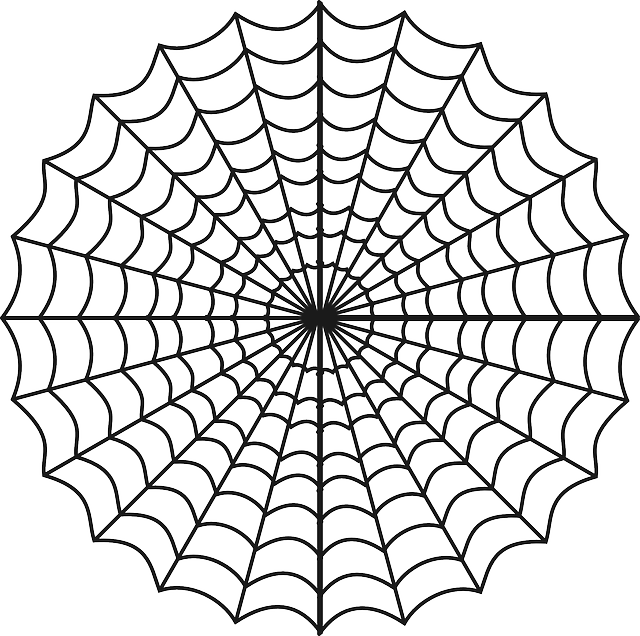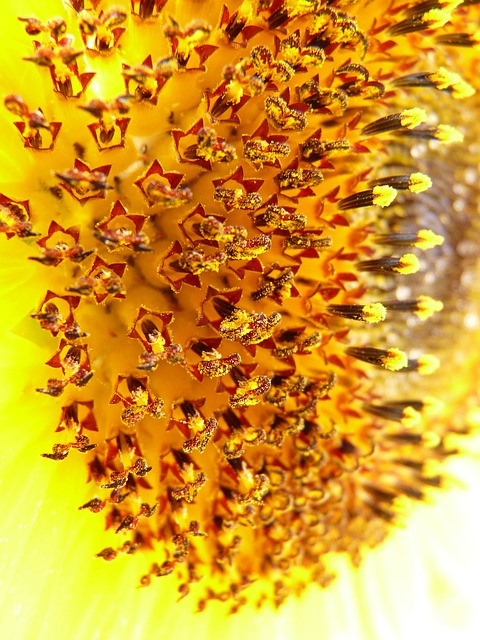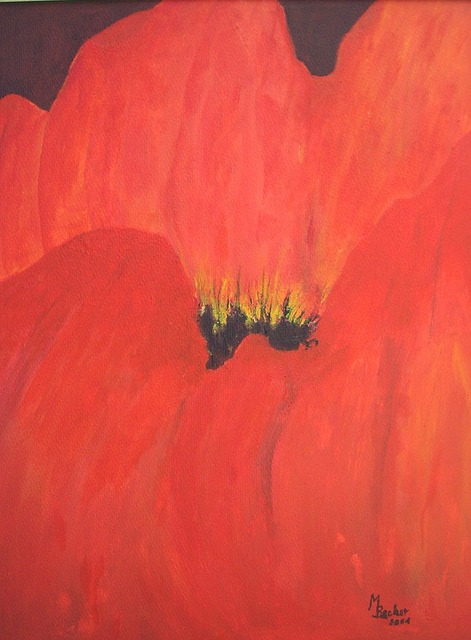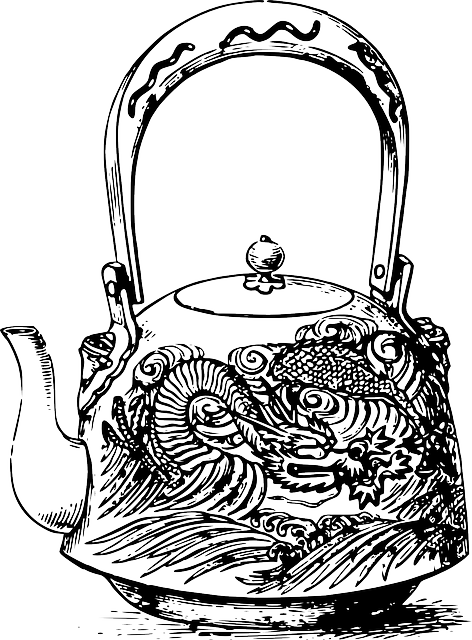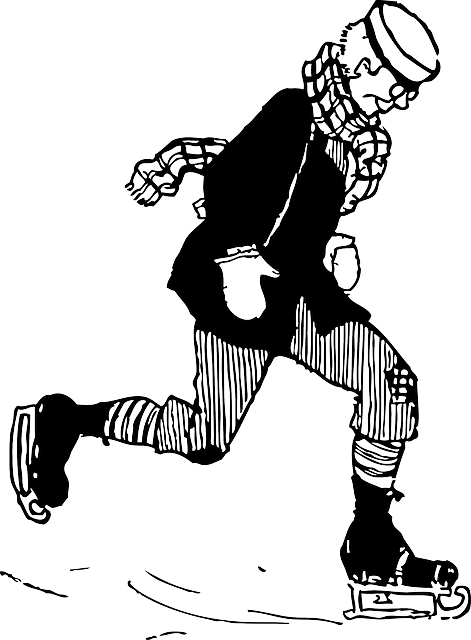تمساح أمريكي
| American crocodile Temporal range: Pleistocene–Recent, 1.9–0 Ma PreЄ
Є
O
S
D
C
P
T
J
K
↓ | |
|---|---|
| Conservation status | |
 Vulnerable (IUCN 3.1) | |
| التصنيف الفهمي | |
| أصنوفة غير معروفة (أصلحها): | Crocodylus |
| Species: | ''C. acutus'' |
| Binomial name | |
|
Crocodylus acutus Cuvier, 1807 | |
| Approximate terrestrial range (green) | |
| Synonyms | |
| |
The American crocodile (Crocodylus acutus) is a species of crocodilian found in the Neotropics. It is the most widespread of the four extant species of crocodiles from the Americas, with populations present from South Florida and the coasts of Mexico to as far south as Peru and Venezuela.
The habitat of the American crocodile consists largely of coastal areas. It is also found in river systems, but tends to prefer salinity, resulting in the species congregating in brackish lakes, mangrove swamps, lagoons, cays, and small islands. Other crocodiles also have tolerance to saltwater due to salt glands underneath the tongue, but the American crocodile is the only species other than the saltwater crocodile to commonly live and thrive in saltwater. They can be found on beaches and small island formations without any freshwater source, such as some of the many cays and islets across the Bahamas and the Caribbean. They are also found in hypersaline lakes; one of the largest known populations inhabits the Lago Enriquillo.
The American is one of the larger crocodile species. Males can reach lengths of 6.1 م (20 قدم 0 بوصة), weighing up to 907 kغ (2,000 رطل). On average, mature males are more in the range of 2.9 to 4.1 م (9 قدم 6 بوصة to 13 قدم 5 بوصة) in length weighing up to about 400 kغ (880 رطل). As with other crocodile species, females are smaller; rarely exceeding 3.8 م (12 قدم 6 بوصة) in length even in the largest-bodied population.
Like any other large crocodilian, the American crocodile is potentially dangerous to humans, though it tends not to be as aggressive as some other species.
Taxonomy and etymology
The American crocodile was described by Georges Cuvier in 1807, and became known as the "sharp-snout alligator". In 1822, Constantine Samuel Rafinesque postulated that the species was in fact a crocodile.
The species was redescribed as Crocodylus floridanus by William Temple Hornaday in 1875, when Hornaday and C. E. Jackson were sent to Florida to collect alligator hides. Upon hearing of a "big old gator" in Arch Creek at the head of Biscayne Bay, Hornaday and his companions searched for it and reported:
In a few hours, we got sight of him, out on the bank in a saw-grass wallow. He was a monster for size—a perfect whale of a saurian, gray in color—and by all the powers, he was a genuine crocodile!
Crocodylus floridanus is now considered an invalid junior synonym of C. acutus.
Characteristics
Like all true crocodilians, the American crocodile is a quadruped, with four short, stocky legs; a long, powerful tail; and a scaly hide with rows of ossified scutes running down its back and tail. Its snout is elongated and includes a strong pair of jaws. Its eyes have nictitating membranes for protection along with lacrimal glands, which produce tears.
The nostrils, eyes, and ears are situated on the top of its head, so the rest of the body can be concealed underwater for surprise attacks.Camouflage also helps it prey on food. The snout is longer and narrower than that of the American alligator, but broader on average than that of the Orinoco crocodile. American crocodiles are also paler and more grayish than the relatively dark-hued American alligator. This crocodile species normally crawls on its belly, but it can also "high walk". Larger specimens can charge up to nearly 10 ميل/س (16 كم/س). They can swim at as much as 20 ميل/س (32 كم/س) by moving their bodies and tails in a sinuous fashion, but they cannot sustain this speed.
Adults have a uniform grayish-green coloration with white or yellow undersides, while juveniles have dark cross-banding on the tail and back.
The American crocodile is sometimes confused with the Morelet's crocodile, a smaller species that is native to Mexico.
Size
New hatchlings are about 27 cم (10.6 بوصة) in length and about 60 غ (2.1 أونصة) in mass. The average adult in the continental rivers can range from 2.9 to 4 م (9 قدم 6 بوصة to 13 قدم 1 بوصة) long and weigh up to 382 kغ (842 رطل) in males, while females can range from 2.5 to 3 م (8 قدم 2 بوصة to 9 قدم 10 بوصة) and weigh up to 173 kغ (381 رطل), the lower total length representing their average size at sexual maturity, the upper representing the expected upper size limit for the respective sex in most known populations.
In the Tárcoles River in Costa Rica, dozens of 4 م (13 قدم 1 بوصة) and a few 5 م (16 قدم 5 بوصة) individuals frequent bridge crossings (where they are fed daily, which may have helped them reach such consistently large sizes) and are a popular tourist attraction. This species is said to grow largest in the South American river basins, but rarely exceed 5 م (16 قدم 5 بوصة) or reach 6 م (19 قدم 8 بوصة) even there. American crocodiles on the islands or coasts are usually much smaller in size. Adult weight in coastal Belize averaged 77.8 kغ (172 رطل) per one study. In their Florida range, adult length has been recorded as high as 5.2 م (17 قدم 1 بوصة), but adult males on average measure 3.35 م (11 قدم 0 بوصة) long, perhaps slightly smaller than mature males from other continental populations. Common weights of adult American crocodiles in Florida may range from 57.2 to 238 kغ (126 to 525 رطل) with corresponding lengths of 2.5 to 3.85 م (8 قدم 2 بوصة to 12 قدم 8 بوصة). With extensive conservation efforts underway, there appears to be an increase in the number of large American crocodiles in Florida exceeding 4 م (13 قدم 1 بوصة) in length. On average, the American crocodiles found in Florida are somewhat longer in total length than the American alligator, but large mature American alligators are frequently bulkier and heavier than American crocodiles of similar length. Also, American alligators rarely reach or exceed 4 م (13 قدم 1 بوصة) whereas in populations such as those in Central and South America, this might be around the average size for mature adult males of the American crocodile. A skull of this species was found to measure 72.6 cم (28.6 بوصة) and is estimated to have belonged to an American crocodile of 6.6 م (21 قدم 8 بوصة) in length. Large, mature males regularly weigh about 400–500 kg (880–1100 lb), with the individuals of six or more meters surpassing 1000 kg (2,200 lb). Two biologists working with the History Channel series MonsterQuest filmed an American crocodile they estimated to beخمسة to 5.5 م (16 قدم 5 بوصة to 18 قدم 1 بوصة), deep within Everglades National Park in Florida.
Distribution and habitat
C. acutus is the most widespread of the four extant species of crocodiles from the Americas. It inhabits waters such as mangrove swamps, river mouths, fresh waters, and salt lakes, and can even be found at sea, hence its wide distribution throughout the Caribbean islands, southern Florida, the Greater Antilles, southern Mexico, Central America, and the South American countries of Colombia and Ecuador. The American crocodile is especially plentiful in Costa Rica. One of its largest documented populations is in Lago Enriquillo, a hypersaline lake in the Dominican Republic. The species has also been recorded in Jamaica. American crocodiles have recently been sighted in Grand Cayman, leading experts to believe the species may be swimming from Cuba (which is home to a massive American crocodile population) and slowly repopulating Grand Cayman. In addition, an American crocodile/Cuban crocodile hybrid was recently discovered in the Cancún area. The crocodile likely originated in the Zapata Swamp of Cuba (the only place where these wild hybrids exist) and swam to the Yucatán Peninsula.
The American crocodile's saline tolerance also allowed it to colonize limited portions of the United States (extreme southern Florida). Contrary to popular misinformation, the presence of the American alligator is not the reason the American crocodile was unable to populate brackish waters north of Florida, but rather the climate. Within the United States, the American crocodile's distribution is generally limited to the southern tip of Florida, though at least two have been found as far north as the Tampa Bay area. The current US population, estimated at 2,000, represents a significant recovery from a few hundred in the 1970s.
American crocodiles, unlike American alligators, are extremely susceptible to cold temperatures and live exclusively within tropical waters. During 2009, unusually cold weather in southern Florida resulted in the deaths of about 150 wild American crocodiles, including a well-known crocodile that inhabited Sanibel Island, far north of the species' natural range.
American crocodiles in the United States coexist with the American alligator, and are primarily found south of the latitude of Miami, in Everglades National Park, Florida Bay, Biscayne Bay, and the Florida Keys. A sizable population occurs near Homestead, at the Turkey Point Nuclear Generating Station. Some individuals have been sighted in Palm Beach, Pinellas and Sarasota Counties. In the summer of 2008, an American crocodile was captured in the surf on Isle of Palms, South Carolina.
The American crocodile is saltwater-tolerant and have thus been capable of colonizing a multitude of islands within the Caribbean islands and on some coastal Pacific islands as well. They coexist with the smaller spectacled caiman within Central America. The only other crocodiles present within the American crocodile's range are Morelet's crocodile and the critically endangered Cuban crocodile.
Biology and behavior
American crocodiles are more susceptible to cold weather than American alligators. While an American alligator can survive in water temperatures of 7.2 °م (45.0 °ف) and below for some time, an American crocodile in that environment would lose consciousness and drown due to hypothermia. American crocodiles, however, have a faster growth rate than alligators, and are much more tolerant of saltwater.
Cleaning symbiosis involving the American crocodile as client has been described. Unlike the Old World crocodiles, which are sometimes cleared of parasites by birds, the American crocodile relies more on fish for parasite removal.
Hunting and diet
American crocodiles are apex predators, and any aquatic or terrestrial animal they encounter in freshwater, riparian and coastal saltwater habitats is potential prey.
The snout of the American crocodile is broader than some specialized fish-eating crocodilians (e.g., gharials and freshwater crocodiles), allowing it to supplement its diet with a wider variety of prey. In addition the snout gets even broader and bulkier as the animal matures, a sign for a shift in prey items. Prey species have ranged in size from the insects taken by young American crocodiles to full-grown cattle taken by large adults, and can include various birds, mammals, turtles, crabs, snails, frogs, and occasionally carrion. In Haiti, hatchling and juvenile American crocodiles lived primarily off of fiddler crabs (Uca ssp.), making up 33.8% and 62.3% of the diet by weight, respectively. Elsewhere, aquatic insects and their larvae and snails are near the top of the food list for American crocodiles at this very early age. Immature and subadult American crocodiles, per a study in Mexico, have a more diverse diet that can include insects, fish, frogs, small turtles, birds and small mammals. One specimen of 1.2 م (3 قدم 11 بوصة) had a catfish, a mourning dove and a bare-tailed woolly opossum in its stomach. In Florida, bass, tarpon and especially mullet, large crabs, snakes, mammals that habit the riparian and coastal regions of the Everglades, such as opossums and raccoons appeared to be the primary prey of American crocodiles. In Haiti, adults appeared to live largely off of various birds, including herons, storks, flamingos, pelicans, grebes, coots and moorhens ), followed by concentrations of marine fish including Tilapia and Cichlasoma, at times being seen to capture turtles, dogs and goats. One 3 م (9 قدم 10 بوصة) adult from Honduras had stomach contents consisting of a 1.5 م (4 قدم 11 بوصة) crocodile of its own species, a turtle shell and peccary hooves. It was noted that historically in Mexico that, among several local farmers, the capturing of livestock by American crocodiles has been a source of some conflict between humans and American crocodiles and large adults occasionally can become habitual predators of goats, dogs, pigs and cattle. In Quintana Roo, Mexico, most prey that could be determined was fish for sub-adults and adults with sub-adults having a broader prey base than either younger or adult crocodiles. In Costa Rica, American crocodiles have been recorded hunting and killing adult female olive ridley sea turtles (Lepidochelys olivacea) when they come to nest around beaches. Reportedly, these American crocodiles hunt primarily in the first few hours after nightfall, especially on moonless nights, although they will feed at any time. It hunts in the typical way for most crocodilian, ambushing terrestrial prey when it comes to edge of the water or is sitting in shallows and dragging it down to be drowned or attempting to ambush aquatic prey from near the surface of the water.
Interspecies predatory relations
Adult American crocodiles have no natural predators. They are known predators of lemon sharks, and sharks avoid areas with American crocodiles. Nonetheless, a single recorded fatality was reported for a small adult American crocodile when a great white shark killed the American crocodile as it was swimming out at sea.
Usually American crocodiles are dominant over and more behaviorally aggressive than American alligators. However, on one occasion, an American crocodile in a Florida zoo escaped its cage and started a fight with a large male American alligator in a bordering pen and was killed by the American alligator. Conversely, there is one confirmed case of an American crocodile preying on a sub-adult American alligator in the wild in Florida. American alligators and American crocodiles do not often come into conflict in the wild, due largely to habitat partitioning and largely separate distributions.
There are several records of American crocodiles killing and eating spectacled caimans in South America. Areas with healthy American crocodile populations often hold only limited numbers of spectacled caimans, while conversely areas that formerly held American crocodiles but where they are now heavily depleted or are locally extinct show a growth of caiman numbers, due to less competition as well as predation. In areas where the two species coexist, the smaller but more aggressive Cuban crocodile is behaviorally dominant over the larger American crocodile. In Mexico, some Morelet's crocodile individuals have escaped from captivity, establishing feral populations and creating a problem for the populations of American crocodile, which must compete with this invasive species.
Reproduction
American crocodiles breed in late fall or early winter, engaging in drawn-out mating ceremonies in which males emit low-frequency bellows to attract females. Body size is more important than age in determining reproductive capabilities, and females reach sexual maturity at a length of about 2.8 م (9.2 قدم). In February or March, gravid females will begin to create nests of sand, mud, and dead vegetation along the water's edge. Nest location is crucial, and with the correct amount of vegetation, the eggs will develop within a small temperature range. Because sex determination is temperature-dependent in crocodilians, slight aberrations in temperature may result in all-male or all-female clutches, which would possibly harm the health of the population. About one month later, when it is time to lay, the female will dig a wide hole diagonally into the side of the nest and lay 30 to 70 eggs in it, depending on her size. After laying, the female may cover the eggs with debris or leave them uncovered. The white, elongated eggs are 8 cم (3.1 بوصة) long and 5 cم (2.0 بوصة) wide and have a number of pores in the brittle shell.
During the 75- to 80-day incubation period, the parents will guard the nest, often inhabiting a hole in the bank nearby. Females especially have been known to guard their nests with ferocity. But in spite of these precautions, American crocodile eggs sometimes fall prey to raccoons (arguably the most virulent natural predator of crocodilian nests in the Americas), coatis, foxes, skunks or other scavenging mammals (including coyotes in Mexico and American black bears in southern Florida), as well as large predatory ants, crabs and vultures. In Panama, green iguana were seen to dig up and prey on American crocodile eggs occasionally, although in several cases were caught by the mother American crocodile and eaten. Crocodilian eggs are somewhat brittle, but softer than bird eggs. Young of this species hatch after 75–80 days.
This species exists mostly in tropical areas with distinct rainy seasons, and the young hatch near the time of the first rains of the summer (July–August), after the preceding dry season and before the bodies of water where they live flood. In this stage of development of their young, mother American crocodiles exhibit a unique mode of parental care. During the hatching process, when the young American crocodiles are most vulnerable to predation, they will instinctively call out in soft, grunt-like croaks. These sounds trigger the female to attend to the nest, uncovering the eggs if they have been covered. Then she will aid the hatchlings in escaping their eggs and scoop them up with her mouth, carrying them to the closest water source.
The hatchlings, which are 24 to 27 cم (9.4 to 10.6 بوصة) in length, have been reported to actively hunt prey within a few days of hatching. It is not uncommon for the mother to care for her young even weeks after they have hatched, remaining attentive to their calls and continuing to provide transportation. About five weeks after hatching, the young American crocodiles disband in search of their own independent lives. Most of them will not survive, being preyed upon by several types of raptorial birds and larger fishes (e.g., barred catfish, Atlantic tarpons, common snook and lemon sharks, boa constrictors, black spiny-tailed iguanas and spectacled caimans). Those that do survive grow rapidly, feeding on insects, fish and frogs. Additionally, some young American crocodiles feed on each other.
Conservation status
The International Union for Conservation of Nature (IUCN) lists the species as vulnerable, but it has not been assessed since 1996. On March 20, 2007, the United States Fish and Wildlife Service declassified the American crocodile as an endangered species, changing its status to "threatened". It remains protected from poaching and killing under the federal Endangered Species Act.
Because of hide hunting, pollution, loss of habitat, and commercial farming, the American crocodile is endangered in parts of its range. As a result of overhunting in the 1950s and 1960s, Venezuela banned commercial crocodile skin harvesting for a decade starting in 1972. In southern Florida, about two-thirds of American crocodile deaths are attributed to road collisions, about 10% to intentional killing, and only about 5% to natural causes.
An estimated 1,000 to 2,000 American crocodiles live in Mexico, Central America and South America, but population data is limited. An additional 500 to 1,200 are believed to live in southern Florida.
Relationship with humans
Attacks by American crocodiles have been reported in Mexico, Costa Rica, and Panama. Crocodiles are, as a general rule, more aggressive towards humans than alligators. The American crocodile rates somewhere in the middle of all crocodilians temperamentally. A study by the IUCN found that it has the highest incidence of reported attacks on humans of any of the crocodilians from the Americas, but fatalities were rare. The species usually does not attack people as regularly as Old World crocodiles do; the estimated number of attacks is considerably smaller than those by the saltwater (C. porosus) and Nile crocodiles (C. niloticus), which are considered the most aggressive crocodilians towards humans. The Cuban crocodile (C. rhombifer) is rather more aggressive in interspecies interactions than the American crocodile and attacks and displaces American crocodiles when they are kept in mixed species enclosures at zoos or at crocodile farms together, despite being smaller than the American species. However, attacks on humans are rarely reported in Cuban crocodiles, due its much more limited habitat and range.
In May 2007, two instances occurred within one week of children being attacked and killed by this species—one in Mexico just south of Puerto Vallarta and one in Costa Rica. On August 24, 2014, a man and a woman were swimming in a canal in Gables by the Sea, a community in Coral Gables, Florida, at 2:00 AM, in a canal where crocodiles were known to occur, when they were bitten in the shoulder and the hand by an American crocodile. Although the crocodile was 12 قدم 1 بوصة (3.68 م) in length, and weighed an estimated 550 رطلs (250 kغ), it did not press the attack, but released and moved away from its victims. (Florida Fish & Wildlife Conservation Commission, Crocodile Response Program) This was the first documented wild crocodile attack on humans in Florida since records of human-crocodile conflict have been kept. On May 19, 2015, a seven-year-old boy was attacked and killed by an American crocodile in the Barra Santa Ana estuary near the city of Lazaro Cardenas, Mexico. This was the eighth crocodile attack in the Barra Santa Ana estuary in the last two years. There have reportedly been 36 American crocodile attacks on humans from 1995 to 2017 in the Cancun area of southeastern Mexico.
See also
- Alligator
- Alligatoridae
- American alligator
- Crocodile
== المراجع ==
- ^ Ponce-Campos, P.; Thorbjarnarson, J.; Velasco, A. & IUCN SSC Crocodile Specialist Group (2012). ". The IUCN Red List of Threatened Species. IUCN. 2012: e.T5659A3043244. doi:10.2305/IUCN.UK.2012.RLTS.T5659A3043244.en. Retrieved 16 January 2018. Listed as Vulnerable (VU 3.1)
- ^ "American Crocodile". People.wcsu.edu. Retrieved 2013-04-25.
- ^ Ellis, T. M. (1981). "Tolerance of sea water by the American crocodile, Crocodylus acutus". Journal of Herpetology. 15 (2): 187. doi:10.2307/1563379. JSTOR 1563379.
- ^ "American Crocodiles, American Crocodile Pictures, American Crocodile Facts – National Geographic". Animals.nationalgeographic.com. 2013-04-15. Retrieved 2013-04-25.
- ^ "ANIMAL BYTES – American Crocodile". Seaworld.org. Retrieved 2013-04-25.
- ^ "WEC 38/UW157: American Crocodiles (Crocodylus acutus) in Florida". Edis.ifas.ufl.edu. Retrieved 2013-04-25.
- ^ "Crocodilian Species – American Crocodile (Crocodylus acutus)". Crocodilian.com. Retrieved 2013-04-25.
- ^ Crocodylus acutus (TSN {{{ID ). Integrated Taxonomic Information System.
- ^ Levin, Ted (2004). (illustrated ed.). University of Georgia Press. pp. 137–152. ISBN .
- ^ Hornaday, William T. (1875). "The crocodile in Florida". The American Naturalist. 9 (9): 498. doi:10.1086/271534.
- ^ "A New Day Dawns in the Everglades". Audubon Magazine. July–August 2001. Archived from the original on 2009-02-13. Retrieved 2009-01-08.
- ^ Hornaday, William T. (1925). . C. Scribner's Sons. p. 147.
- ^ Crocodylus floridanus (TSN {{{ID ). Integrated Taxonomic Information System.
- ^ Stejneger, Leonhard (1933-10-15). "Crocodilian Nomenclature". Copeia. American Society of Ichthyologists and Herpetologists. 1933 (3): 117–120. doi:10.2307/1436233. JSTOR 1436233.
- ^ Guggisberg, C. A. W. (1972). Crocodiles: Their Natural History, Folklore, and Conservation. Newton Abbot: David & Charles. p. 195. ISBN .
- ^ Gregg, Gordon; Gans, Carl. "Morphology & Physiology of the Crocodylia" (PDF). Archived from the original (PDF) on 2005-07-20.
-
^ Swiman, Elizabeth; Hostetler, Mark; Main, Martin; Miller, Sarah Webb (August 2005). "Living with Alligators: A Florida Reality". UF/IFAS Extension Service. Retrieved October 4, 2014.
When alligators walk on land, they can move very quickly and are capable of running at speeds of 7.5 toتسعة mph for short distances.
- ^ "American Crocodile". Everglades. Miami Science Museum. Archived from the original on 11 September 2014. Retrieved 2008-12-12.
- ^ Conant, Roger; Collins, Joseph T. (1998). Reptiles and Amphibians Eastern-Central North America. Illustrated by Isabelle Hunt Conant and Tom R. Johnson (3rd ed.). Boston: Houghton Mifflin. pp. 142–3. ISBN .
- ^ Moller, Michelle P.; Cherkiss, Michael S.; Mazzotti, Frank J. "The American Crocodile: A Story of Recovery". The Croc Docs. Fort Lauderdale Research and Education Center. Retrieved 2008-12-12.
- ^ Savage, Jay M.; Fogden, Michael; Fogden, Patricia (2005). The Amphibians and Reptiles of Costa Rica: A Herpetofauna between Two Continents, between Two Seas. University Of Chicago Press. ISBN .
- ^ "American Crocodile". Animals. National Geographic Society. Archived from the original onعشرة December 2008. Retrieved 2008-11-29.
- ^ Thorbjarnarson, J. B. (1986). "Ecology of the American crocodile, Crocodylus acutus", p. 228 in Crocodiles: Proceedings of the 7th Working Meeting of the Crocodile Specialist Group of the Species Survival Commission of the International Union for Conservation of Nature and Natural Resources, Caracas, Venezuela, 21 to 28 October 1984. IUCN.
- ^ Behler JL, King FW. (1979). The Audubon Society Field Guide to North American Reptiles and Amphibians. New York: Alfred A. Knopf. LCCCN 79-2217. ISBN 0-394-50824-6.
- ^ "American Crocodiles, American Crocodile Pictures, American Crocodile Facts – National Geographic". Animals.nationalgeographic.com. Retrieved 2011-11-15.
- ^ Platt, S. G.; T. R. Rainwater; J. B. Thorbjarnarson & D. Martin (2009). in the coastal zone of Belize". Caribbean Journal of Science. 45: 80. doi:10.18475/cjos.v45i1.a12.
- ^ Gaby, R.; McMahon, M. P.; Mazzotti, F. J.; Gillies, W. N. & Wilcox, J. R. (1985). at a power plant site in Florida". Journal of Herpetology. 19 (2): 189. doi:10.2307/1564172. JSTOR 1564172.
- ^ Wood, Gerald (1983). The Guinness Book of Animal Facts and Feats. ISBN .
- ^ Beauchamp, J.S., Cherkiss, M.S., Rochford, M.R. & Mazzotti, F.J. (2009). A RECENT CAPTURE OF A LARGE AMERICAN CROCODILE (Crocodylus acutus) IN FLORIDA. Florida Field-Naturalist, 37 (4): 149-150.
- ^ "ANIMAL BYTES – American Crocodile". Seaworld.org. Retrieved 2011-11-15.
- ^ "American Crocodile (Crocodylus acutus)". Crocodilians: Natural History & Conservation. Florida Museum of Natural History. Retrieved 2008-11-29.
- ^ "8 Crocodiles kill man in Mexico". Sindh Today. 12 August 2008. Archived from the original on 2008-08-22. Retrieved 2008-11-29.
- ^ Ahrenfeldt, Robert H. (1954-05-05). "Identification of the Amphibia and Reptilia Recorded in Jamaica growing rapidly by Hans Sloane (1688–89)". Copeia. American Society of Ichthyologists and Herpetologists. 1954 (2): 105–111. doi:10.2307/1440328. JSTOR 1440328.
- ^ "Trappers catch crocodile in Lake Tarpon", Tampa Bay Times, July 12, 2013
- ^ "Crocodilians: Natural History and Conservation – Crocodiles, Caimans, Alligators, Gharials". Crocodilian.com. Retrieved 2016-12-04.
- ^ Kushlan, J. A.; Mazotti, F. (1989). "Historic and present distribution of the American crocodile in Florida". Journal of Herpetology. 23 (1): 1–7. doi:10.2307/1564309. JSTOR 1564309.
- ^ "Providing a home for the American crocodile" (PDF). Florida Power & Light. Archived from the original (PDF) on 2012-11-24.
- ^ Allen, Greg (21 April 2007). "American Crocodiles Make a Comeback". National Public Radio. Retrieved 2008-12-12.
- ^ Pittman, Craig (August 5, 2013). "Croc found in Lake Tarpon traveled 350 miles from South Florida home". Tampa Bay Times. Retrieved 2013-08-06.
- ^ Thorbjarnarson, J. B. (1988). The status and ecology of the American crocodile in Haiti. Bulletin of the Florida State Museum. Biological Sciences (USA).
- ^ Alvarez del Toro, M. (1974). Los Crocodylia de México (estudio comparativo). Smith III.
- ^ "American Crocodile". People.wcsu.edu. Retrieved 2013-04-25.
- ^ Schmidt, K. P. (1924). Notes on Central American crocodiles. Publs. Field Mus. Nat.
- ^ Villegas, A. & Soto, J. J. S. (2008). (Cuvier, 1807) (reptilia: crocodylidae) in the southern coast of Quintana Roo, Mexico". Acta Zoológica Mexicana (nueva serie). 24 (3): 117–124.
- ^ Ortiz, R. M.; Plotkin, P. T. & Owens, D. W. (1997). ) at Playa Nancite, Costa Rica" (PDF). Chelonian Conservation and Biology. 2: 585–586.
- ^ Surfactants as chemical shark repellents: past, present, and future. Joseph A. Sisneros & Donald R. Nelson.
- ^ Carrier, Jeffrey C.; Musick, John A.; Heithaus, Michael R. (2012-04-09). (Second ed.). CRC Press. ISBN .
- ^ Somaweera, Ruchira; Brien, Matthew; Shine, Richard (2013). "The Role of Predation in Shaping Crocodilian Natural History". Herpetological Monographs. 27: 23. doi:10.1655/HERPMONOGRAPHS-D-11-00001.
- ^ Ogden, J. C. (1978). "Status and nesting biology of the American crocodile, Crocodylus acutus, (Reptilia, Crocodilidae) in Florida". Journal of Herpetology. 12 (2): 183. doi:10.2307/1563406. JSTOR 1563406.
- ^ Ramos Targarona, Roberto; Rodríguez Soberón, Roberto; Tabet, Manuel Alonso and Thorbjarnarson, John B. . iucncsg.org.
- ^ Hurley, Brigid-Catherine. (Morelets Crocodile)". Animal Diversity Web. Retrieved 2015-10-23.
- ^ Dugan, Beverly A.; Rand, A. Stanley; Burghardt, Gordon M.; Bock, Brian C. (1981). "Interactions between Nesting Crocodiles and Iguanas". Journal of Herpetology. 15 (4): 409. doi:10.2307/1563530. JSTOR 1563530.
- ^ "U.S. Crocodiles Shed "Endangered" Status". National Geographic Society. 21 March 2007. Archived from the original onعشرة December 2008. Retrieved 2008-12-07.
- ^ "American Crocodile No Longer Near Extinction. March 21, 2007". Newsmax.com. 2007-08-25. Retrieved 2013-04-25.
- ^ Pough, F. Harvey; Andrews, Robin M.; Cadle, John E.; Crump, Martha L.; Savitsky, Alan H.; Wells, Kentwood D. (2004). Herpetology (3rd ed.). Upper Saddle River, New Jersey: Pearson/Prentice Hall. pp. 628–9. ISBN .
- ^ Brien, M. L., Cherkiss, M. S., & Mazzotti, F. J. (2008). American crocodile, Crocodylus acutus, mortalities in southern Florida. Florida Field Naturalist, 36(3), 55–59.
- ^ "American Crocodile (Crocodylus acutus)". National Parks Conservation Association. Archived from the original on 2008-12-11. Retrieved 2008-12-07.
- ^ Sideleau, B., & Britton, A. R. C. (2012). "A preliminary analysis of worldwide crocodilian attacks", pp. 111–114 in Crocodiles. Proceedings of the 21st Working Meeting of the Crocodile Specialist Group, Manila, Philippines. IUCN. Gland, Switzerland, Manila, Philippines.
- ^ "Boy killed in crocodile attack in Mexico". msnbc.com. Associated Press. ثلاثة May 2007. Archived from the original onعشرة December 2008. Retrieved 2008-11-29.
- ^ "Crocodile makes off with boy". Television New Zealand. Reuters.خمسة May 2007. Archived from the original onتسعة December 2008. Retrieved 2008-11-29.
- ^ D'Oench, Peter (2014-08-25). "Gables Croc Attack, First Time In Florida « CBS Miami". Miami.cbslocal.com. Retrieved 2016-12-04.
- ^ Dunn, James (2015-05-20). "Seven-year-old boy eaten alive by crocodile in Mexico while father looked on | Daily Mail Online". Dailymail.co.uk. Retrieved 2016-12-04.
- ^ Brennan, Christopher (July 4, 2017). "American tourist urinating in Cancun lagoon loses arm to crocodile attack". New York Daily News. Retrieved 8 March 2019.
وصلات خارجية
| مشاع الفهم فيه ميديا متعلقة بموضوع Crocodylus acutus. |
- University of Florida's crocodile research in Southwest Florida
- نطقب:EOL
Media
- Crocodylus acutus at CalPhotos
خطأ لوا في وحدة:Taxonbar على السطر 140: attempt to index field 'wikibase' (a nil value).


